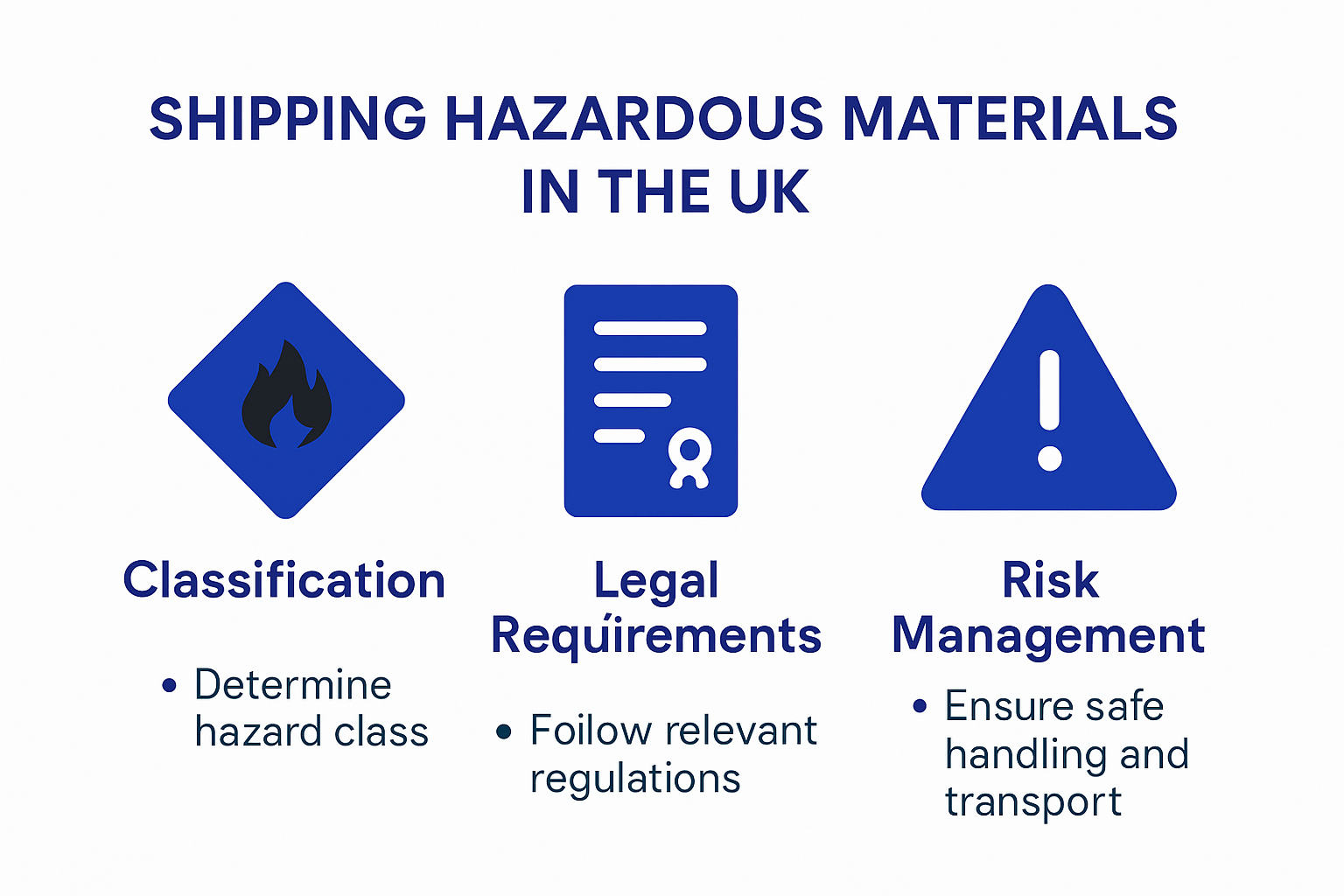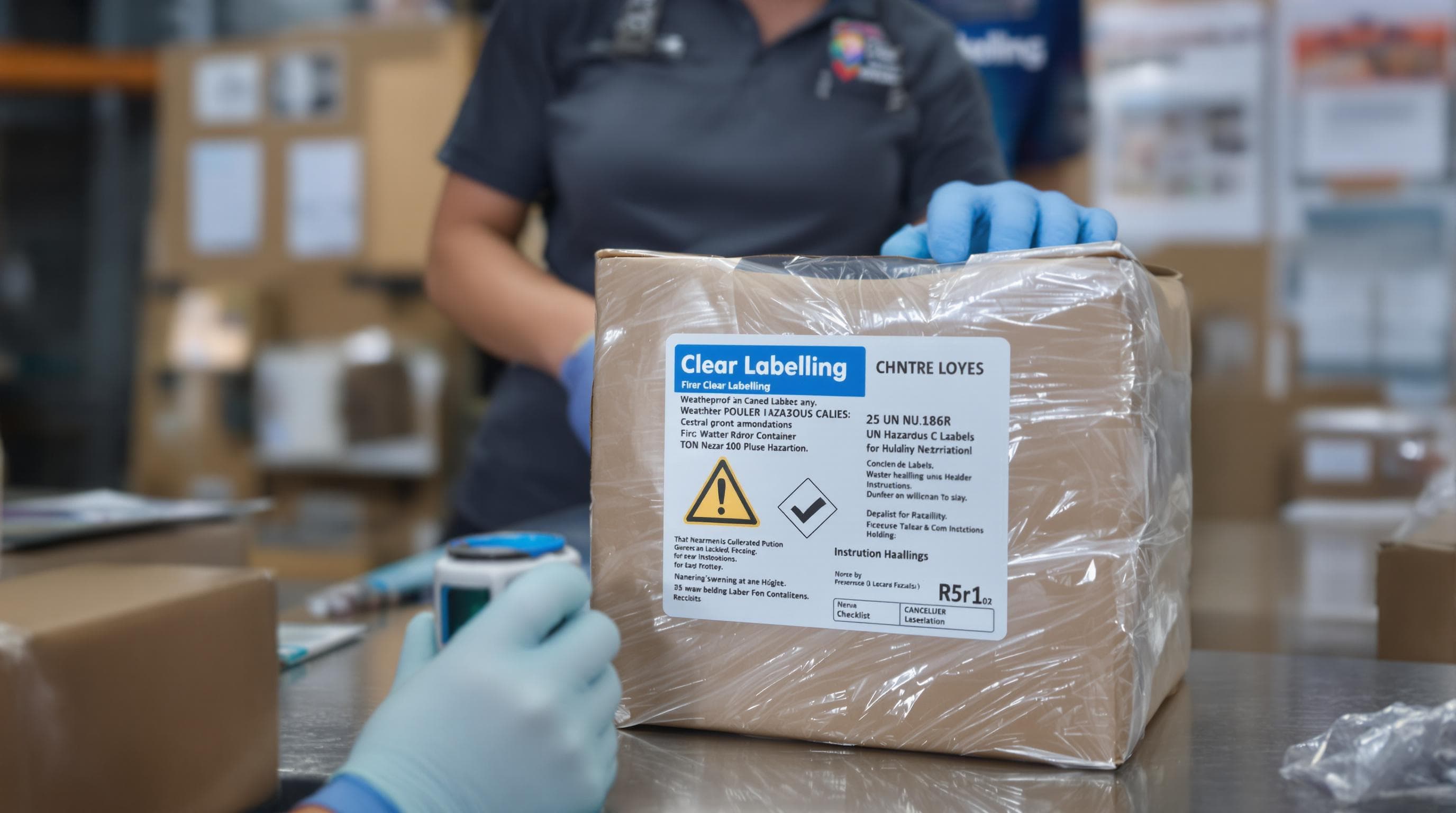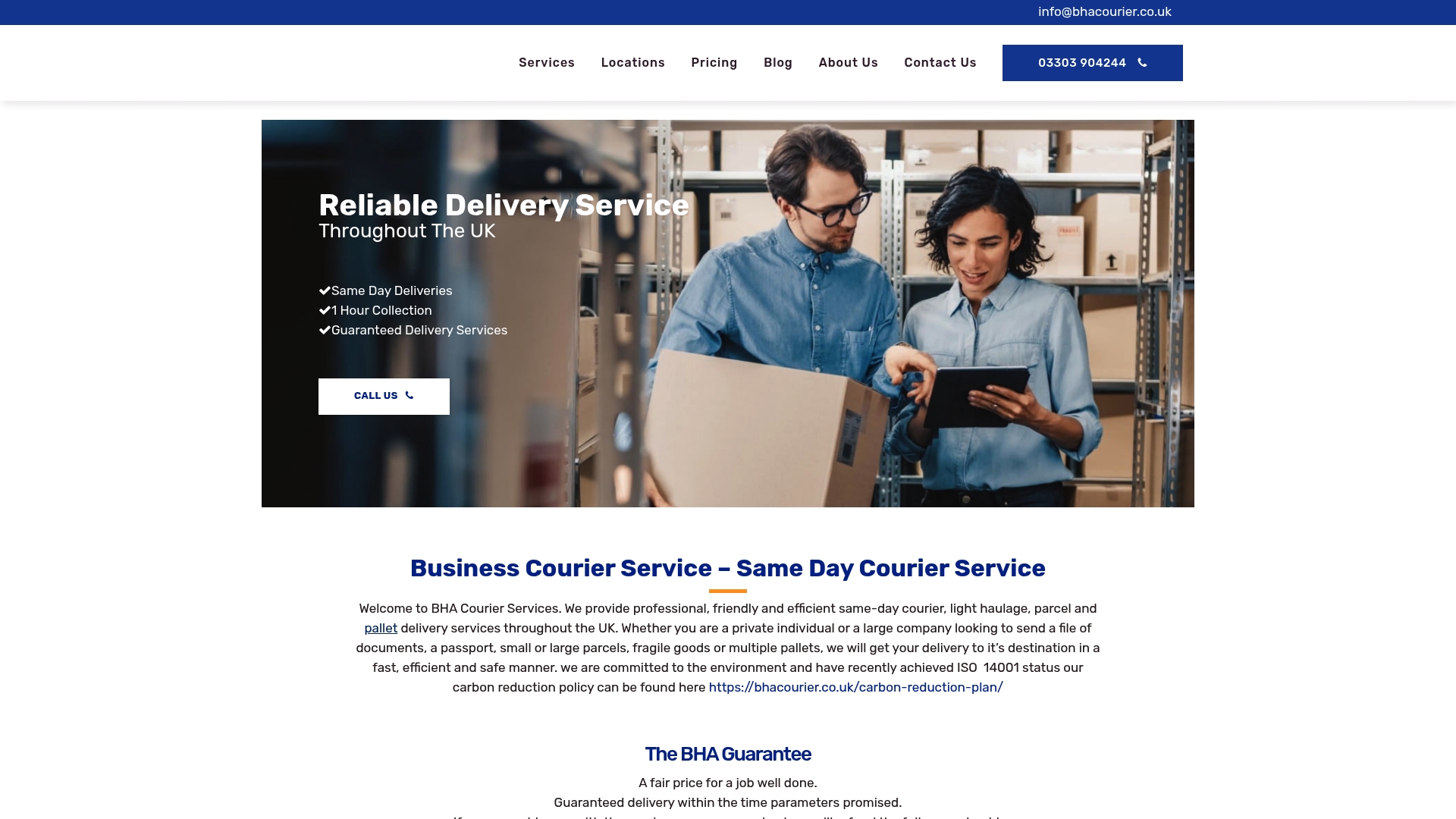
22 Jul Shipping Hazardous Materials in the UK: 2025 Guide for Businesses
Transporting hazardous materials across the UK is a business necessity for thousands of companies each year. You might expect that strict rules and complex paperwork would be the main hurdles for firms. Yet, the true surprise is this. A single mistake—like an unlabelled box or incomplete risk assessment—can result in fines exceeding £20,000 and even criminal charges for managers. This risk is often overlooked and shows that compliance is not just a legal box to tick but a real safeguard against business disruption.
Table of Contents
- Understanding Hazardous Materials Shipping Rules
- Essential Packing And Labelling Steps
- Choosing Couriers And Managing Compliance
- Tips For Hassle-Free And Safe Deliveries
Quick Summary
| Takeaway | Explanation |
|---|---|
| Understand Hazardous Material Classifications | Proper identification of hazardous materials is essential for compliance and safe shipping practices. Familiarity with UN classifications is crucial. |
| Ensure Legal Compliance for Shipping | Adhere to UK regulations by maintaining proper documentation and ensuring staff receive mandatory training on hazardous materials handling. |
| Implement Robust Risk Management Strategies | Develop emergency response plans and conduct regular risk assessments to minimize safety hazards during transportation of dangerous goods. |
| Select Couriers with Hazardous Goods Expertise | Evaluate couriers based on their certifications and specialised training to ensure they can safely transport hazardous materials. |
| Prioritise Continuous Training for Staff | Invest in ongoing education programs to keep employees updated on regulations and safety protocols for hazardous materials shipping. |
Understanding Hazardous Materials Shipping Rules
Shipping hazardous materials requires precise knowledge and strict adherence to complex regulatory frameworks in the United Kingdom. Businesses engaging in the transport of dangerous goods must navigate intricate legal requirements to ensure safety, compliance, and environmental protection.

Classification and Identification of Hazardous Materials
The process of shipping hazardous materials begins with accurate classification and identification. According to the Health and Safety Executive, hazardous materials are categorised into specific classes based on their inherent risks, including explosives, gases, flammable liquids, toxic substances, corrosive agents, and radioactive materials. Each classification demands unique handling protocols and transportation guidelines.
Businesses must understand the UN classification system, which assigns a four digit number to each hazardous substance. This identification system enables rapid recognition of potential risks and appropriate safety measures during shipping. Companies must ensure all packaging, labelling, and documentation precisely reflect these classification details.
Legal and Regulatory Compliance
Navigating the legal landscape of hazardous materials shipping requires comprehensive understanding of multiple regulations. The Carriage of Dangerous Goods and Use of Transportable Pressure Equipment Regulations (CDG) provides the primary legal framework governing the transportation of dangerous goods within the United Kingdom.
Key compliance requirements include:
- Mandatory Training: All personnel involved in shipping hazardous materials must undergo specialised training and certification.
- Proper Documentation: Detailed shipping documents must accompany every consignment, including safety data sheets and emergency contact information.
- Vehicle and Equipment Standards: Specialized vehicles and packaging must meet stringent safety standards designed to prevent potential environmental or human health risks.
Risk Management and Safety Protocols
Effective shipping of hazardous materials demands robust risk management strategies. Businesses must develop comprehensive emergency response plans, implement strict safety protocols, and maintain rigorous documentation tracking the entire transportation process.
Key safety considerations include:
- Containment Integrity: Using appropriate packaging that can withstand potential chemical interactions and physical stresses during transportation.
- Emergency Preparedness: Training staff in rapid response techniques and maintaining communication systems for immediate intervention if incidents occur.
- Regular Equipment Inspection: Conducting frequent checks on transportation vehicles and containment equipment to identify potential vulnerabilities.
By understanding and meticulously applying these regulatory frameworks, businesses can ensure safe, compliant, and responsible shipping of hazardous materials across the United Kingdom. Continuous education, rigorous training, and proactive risk management are essential in maintaining the highest standards of safety and environmental protection.
Essential Packing and Labelling Steps
Packing and labelling hazardous materials represents a critical process that demands precision, expertise, and strict adherence to regulatory standards. Businesses shipping dangerous goods must implement comprehensive strategies to ensure safe transportation and compliance with UK regulations.
Packaging Requirements for Hazardous Materials
Selecting appropriate packaging is fundamental to the safe transportation of hazardous materials. According to the International Air Transport Association (IATA), packaging must meet specific design criteria that prevent leakage, chemical interaction, and potential environmental contamination.
Key packaging considerations include:
- Material Compatibility: Using packaging materials that do not react chemically with the hazardous substance being transported.
- Structural Integrity: Ensuring containers can withstand physical stress, temperature variations, and potential impact during transportation.
- Pressure Resistance: Designing packaging that can manage internal pressure changes for gases and volatile substances.
The British Standards Institution (BSI) provides detailed guidelines for packaging different classes of hazardous materials, specifying precise technical requirements for various dangerous goods.
Comprehensive Labelling Protocols
Labelling represents a critical communication mechanism for identifying and managing potential risks associated with hazardous materials. Each package must display clear, durable labels that provide immediate visual information about the contents and associated hazards.
Essential labelling elements include:
- UN Identification Number: A unique four-digit code identifying the specific hazardous material.
- Hazard Class Symbol: Graphical representation of the primary risk associated with the material.
- Emergency Contact Information: Detailed contact details for rapid response in case of incidents.
- Handling Instructions: Specific guidance for safe management during transportation.

Documentation and Shipping Compliance
Accompanying physical packaging and labelling, comprehensive documentation is crucial for shipping hazardous materials. Businesses must prepare detailed shipping papers that provide a complete overview of the dangerous goods being transported.
Critical documentation requirements include:
- Safety Data Sheets (SDS): Comprehensive documents detailing chemical properties, potential risks, and emergency response procedures.
- Transport Declaration: Official document listing precise details of hazardous materials, including quantity, classification, and packaging information.
- Emergency Response Plan: Detailed protocol outlining steps to manage potential incidents during transportation.
By implementing these rigorous packing and labelling protocols, businesses can ensure the safe and compliant transportation of hazardous materials. Attention to detail, continuous staff training, and staying updated with evolving regulatory standards are essential components of effective hazardous materials shipping management.
Choosing Couriers and Managing Compliance
Selecting the right courier for shipping hazardous materials is a critical decision that directly impacts a business’s safety, regulatory compliance, and operational efficiency. Companies must carefully evaluate potential transportation partners based on their expertise, certification, and ability to manage complex dangerous goods shipping requirements.
Evaluating Courier Specialisation and Credentials
Not all courier services are equipped to handle hazardous materials. Businesses must conduct comprehensive assessments of potential transportation partners. According to the Vehicle Certification Agency, specialized certification is crucial for couriers managing dangerous goods.
Key evaluation criteria include:
- Regulatory Certifications: Verifying ADR (European Agreement concerning the International Carriage of Dangerous Goods by Road) compliance
- Specialized Training: Confirming staff have completed advanced dangerous goods transportation training
- Vehicle and Equipment Standards: Assessing whether transportation assets meet stringent safety requirements
Compliance Management and Legal Responsibilities
Businesses have significant legal obligations when shipping hazardous materials. The UK government mandates that organizations regularly handling dangerous goods appoint a Dangerous Goods Safety Adviser (DGSA) to ensure comprehensive regulatory adherence.
Critical compliance management steps involve:
- Regular Risk Assessments: Conducting periodic evaluations of shipping processes and potential hazards
- Documentation Maintenance: Keeping meticulous records of all hazardous material shipments
- Continuous Staff Training: Implementing ongoing education programmes for employees involved in dangerous goods transportation
Insurance and Risk Mitigation
Proper insurance coverage is fundamental when shipping hazardous materials. Learn more about courier insurance requirements to understand the comprehensive protection needed for dangerous goods transportation.
Key risk mitigation strategies include:
- Comprehensive Liability Coverage: Ensuring insurance policies specifically address hazardous material transportation risks
- Emergency Response Planning: Developing detailed protocols for potential incident management
- Regular Policy Review: Continuously updating insurance coverage to match evolving regulatory landscapes
By implementing a strategic approach to courier selection and compliance management, businesses can navigate the complex landscape of hazardous materials shipping. Thorough due diligence, continuous education, and partnerships with specialised transportation providers are essential for maintaining safety, legal compliance, and operational excellence in dangerous goods logistics.
Tips for Hassle-Free and Safe Deliveries
Ensuring smooth and secure transportation of hazardous materials requires strategic planning, meticulous attention to detail, and a comprehensive understanding of safety protocols. Businesses must adopt proactive approaches to minimize risks and maintain compliance throughout the shipping process.
Pre-Delivery Preparation and Risk Assessment
Successful hazardous materials delivery begins long before the package leaves the facility. According to the Health and Safety Executive (HSE), comprehensive pre-delivery preparation is crucial for managing potential risks effectively.
Key preparation steps include:
- Detailed Risk Mapping: Conducting thorough assessments of potential transportation hazards
- Equipment Verification: Ensuring all packaging and containment systems meet regulatory standards
- Route Planning: Identifying and evaluating potential transportation routes with minimal environmental and safety risks
The UK government guidelines emphasize the importance of systematic risk evaluation and mitigation strategies before initiating any hazardous material shipment.
Communication and Documentation Protocols
Effective communication represents a critical component of safe hazardous materials delivery. All parties involved in the transportation process must maintain clear, transparent, and detailed communication channels.
Essential communication strategies include:
- Comprehensive Briefing: Providing detailed information about the hazardous materials to all involved personnel
- Emergency Contact Systems: Establishing robust communication protocols for rapid response to potential incidents
- Real-Time Tracking: Implementing advanced tracking systems to monitor shipment progress and identify potential issues
Businesses can learn more about advanced courier insurance requirements to enhance their understanding of comprehensive protection mechanisms for dangerous goods transportation.
Continuous Training and Compliance Monitoring
Ongoing staff education and rigorous compliance monitoring are fundamental to maintaining safe hazardous materials deliveries. Organizations must invest in continuous training programmes that keep personnel updated on the latest regulatory requirements and safety protocols.
Critical training and monitoring aspects include:
- Regular Certification Updates: Ensuring all staff maintain current qualifications in hazardous materials handling
- Periodic Performance Reviews: Conducting systematic evaluations of shipping practices and identifying improvement opportunities
- Technology Integration: Leveraging digital tools and platforms to enhance tracking, documentation, and compliance management
By implementing these comprehensive strategies, businesses can significantly reduce risks associated with hazardous materials shipping. A proactive, systematic approach that prioritizes safety, communication, and continuous learning will enable organizations to navigate the complex landscape of dangerous goods transportation with confidence and reliability.
To help clarify the different hazardous material classes and their associated risks as discussed above, the following table summarises common hazard classes and examples:
Hazardous Material Classes and Examples
| Class | Description | Example Materials |
|---|---|---|
| Explosives | Explosive substances & items | Fireworks, Ammunition |
| Gases | Compressed, liquefied gases | Propane, Oxygen |
| Flammable Liquids | Easily ignited liquids | Petrol, Alcohols |
| Toxic Substances | Harmful/poisonous chemicals | Cyanide, Pesticides |
| Corrosive Agents | Substances causing corrosion | Acids, Caustic Soda |
| Radioactive Materials | Emit ionising radiation | Medical Isotopes |
Below is a table summarising key steps and documents required for compliant hazardous materials shipping, helping businesses track their regulatory and safety obligations:
Key Steps and Documentation for Shipping Hazardous Materials
| Step | Purpose | Example Document/Action |
|---|---|---|
| Hazard Identification | Ensure proper classification and risk awareness | UN Number Assignment |
| Staff Training | Legal compliance and safer handling | Training Certificate |
| Packing & Containment | Prevent leaks/interactions during transport | Use BSI-Approved Containers |
| Labelling | Identify hazards for handlers and responders | Hazard Labels, UN Number |
| Documentation Preparation | Regulatory and emergency reference | SDS, Transport Declaration |
| Emergency Planning | Effective incident response | Emergency Response Plan |
Frequently Asked Questions
What regulations govern the shipping of hazardous materials in the UK?
The shipping of hazardous materials in the UK is governed primarily by the Carriage of Dangerous Goods and Use of Transportable Pressure Equipment Regulations (CDG). These regulations outline the necessary compliance requirements for transporting dangerous goods, including packaging, labelling, and employee training standards.
How can businesses ensure compliance when shipping hazardous materials?
Businesses can ensure compliance by conducting mandatory training for all staff involved in hazardous materials shipping, maintaining proper documentation (such as Safety Data Sheets and transport declarations), and adhering to packaging and labelling requirements based on the UN classification system for hazardous materials.
What are the potential consequences of non-compliance when shipping hazardous materials?
Non-compliance with shipping regulations for hazardous materials can result in severe penalties, including fines exceeding £20,000 and potential criminal charges against responsible managers. Additionally, non-compliance can lead to operational disruptions and damage to a company’s reputation.
What should I consider when selecting a courier for hazardous materials?
When selecting a courier for shipping hazardous materials, businesses should evaluate the courier’s regulatory certifications, specialised training in hazardous goods transport, and the adequacy of their vehicles and equipment according to safety standards. This ensures that the courier is qualified to safely handle and transport dangerous goods.
Take the Risk Out of Hazardous Material Shipping Today
Are you concerned about making a costly mistake when shipping hazardous materials? This guide has shown how a single error in documentation, packaging, or courier selection can lead to severe penalties or business disruptions. Many business owners feel overwhelmed by complex legal requirements, constant regulation changes, and the fear that something will slip through the cracks. Your top priority is clear—reliable, secure delivery that keeps your business compliant and your reputation intact.

Now is the time to partner with experts who care about your success. At BHA Courier, we offer dedicated solutions for time-sensitive, secure deliveries with full compliance support. Our team is trained on hazardous goods handling and our same-day courier services mean your critical shipments always arrive on time. We make compliance easy so you can focus on your core business. Do not wait for an inspection or a shipping incident to reveal gaps in your process. Contact us today to arrange a compliant courier service that protects your business and builds trust with every delivery.

Sorry, the comment form is closed at this time.